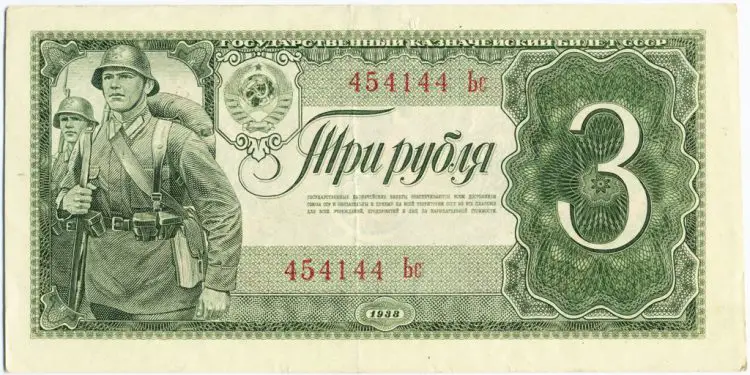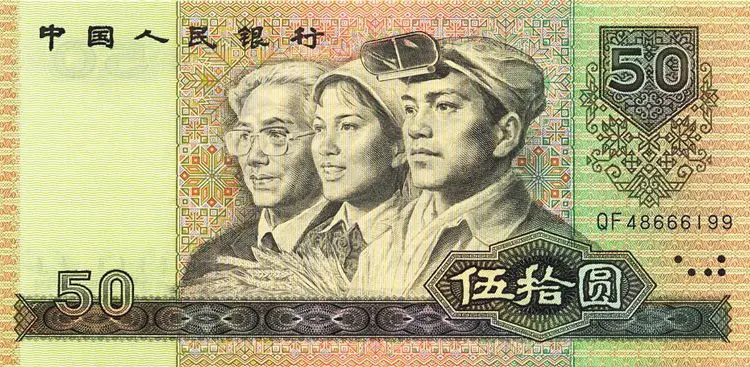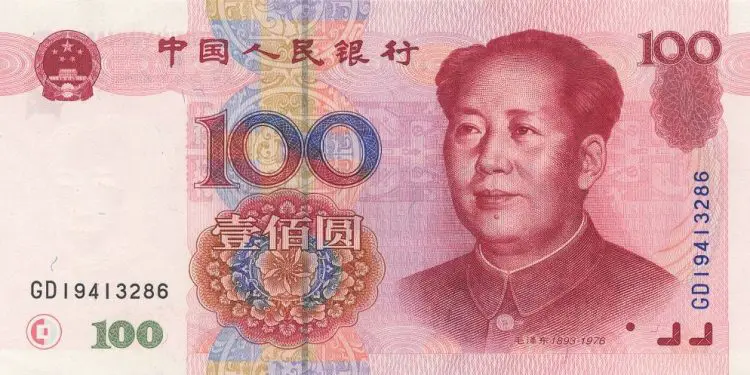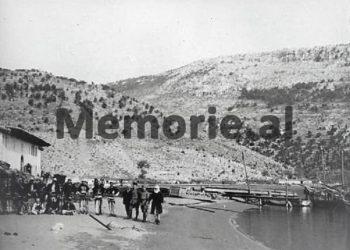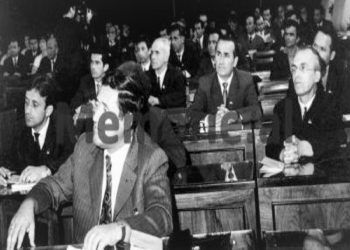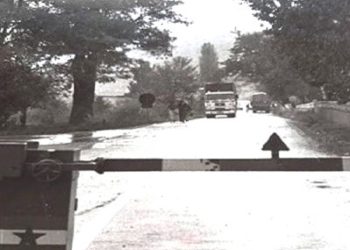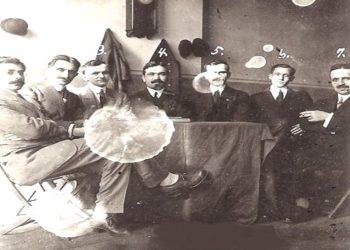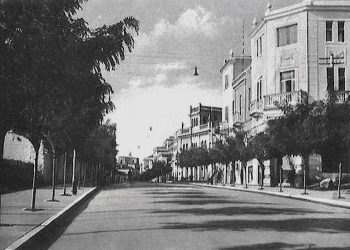
By Adrian Civici
Typical reflection of the politics and ideology of the time – similarities / differences with the countries of the former Eastern Communist bloc
When writing or talking about money and its connection to history, art, culture, public life, political systems or the dominant ideology, you often come across an assessment of the “currency”, said Magdi Hanafi, a researcher on the history of coins, according to which “For many centuries, coins, whether metal or paper, testify to everything that has happened, including events or characters that have been neglected or have not aroused the interest of historians themselves. “They play a key role in the political, diplomatic, economic and artistic spheres.”
In many cases, coins are considered the “best media of the era”, as the most important book where you can “read” and easily understand the political history and the history of ideas, the ruling ideology and the propaganda that accompanied it, the financial and economic history , cultural and religious history, etc.
If you do not have the time and opportunity to read and study the history, ideas, utopias and most important events of a nation, an album or encyclopedia of its coins is enough to understand the essence of its historical journey and the political, economic and social that has accompanied it in different historical periods.
It is interesting to see the reflection of the various coins, metal or paper, on the ideology and historical period of the “construction of socialism and communism” in the “eastern bloc” and its satellites, led by the Soviet Union.
The analysis of the “role of money in socialism” does not aim to address the specific and truncated functions of money in a politico-economic system with centralized planning, but to focus only on two more specific aspects related to the currency: can Is “Eastern Marxist-Leninist” socialism and communism “read” and understood through images of coins? … Can the theoretical, ideological and political messages of the communist government and leaders be clearly understood through the images of coins?
Numerous authors, especially scholars of the history and symbolism of coins, think that socialist or communist reality is reflected quite clearly in the evolution of the images and symbolism of coins. They faithfully express the complex history of the former socialist countries, especially that of 1945-1991.
Quite interesting is the study of Albanian banknotes of this period, which, with some small specifics, compared to banknotes of other countries of the communist bloc, seem to have followed the same logic and purpose and, in many cases, the conception graphic, symbolic or colors are almost similar to the currencies of countries like the Soviet Union, East Germany, Bulgaria, China etc.
Content and “messages” of coins in Soviet Russia and the “Eastern Communist bloc” – 1919 – 1991
Building socialism
Russia after the October Revolution and later the Soviet Union are the most obvious mirrors of the states and the socialist and communist system. Being the ideological and political center of the communist Eastern bloc, Russia and the US are the most significant example in their “behavior” towards the currency. The Soviet spirit and style of banknotes became points of reference and guidance for all other countries with the same political model.
The dominant image of the illustration of the Russian currency, the ruble, in the period 1880 -1914 had in the center the figure of the Tsar, “Mother Russia” and the imperial symbols, dominated by the two-headed eagle, with the imperial crown, as evidenced in the 500 denomination coin. rubles of 1910.
After the victory of the October Revolution, the overthrow of the tsarist regime, the first coins issued by the new Russian governments, do not stand out for any special feature or message, but simply try to prove that already, with the “new political and social era” , a new era in the monetary and banking system has begun. Russian coins of the period 1919 – 1922 have stamped only the eagle symbol and the note of the Bank of Russia on the new coin and its value, as it appears on the coin worth 10000 rubles, denomination of 1919.
During the period 1919-1991, the coins issued in Soviet Russia (but also in all former socialist and communist countries of the time), faithfully reflect the situations that the newly formed communist state was going through, its anxieties and worries, the main messages it wanted to conveyed political, ideological and cultural differences with Western capitalist enemies.
Almost every decade, the new coins that were issued faithfully produced the regime’s “keywords”, its core messages, its needs to highlight successes, to show military strength, system stability and loyalty to Marxism-Leninism and its leaders. communists, differences to bourgeois-capitalist countries.
Even the tendencies to undertake some liberalizing reforms, in the years 1960 -1970, find expression in the content of coins, trying to liberate and strip them from the traditional conservative communist ideology, replacing the hitherto images of coins with scenes and images with more picturesque, such as “views of the Kremlin”, “Spasskaia tower” etc.
With all these common nuances and features, the most enduring feature of Soviet coins during the period 1931-1991 is the presence of the portrait of Lenin that was not absent in any kind of denomination. The Soviet power constantly felt the need to demonstrate allegiance to the Marxist-Leninist ideology and its leader, Lenin. The figure of Lenin disappeared from Russian coins after 1991.
From 1924 until the late 1970s, Russian coins began to faithfully reflect communist ideology and its basic dogmas or principles for building socialism and communism, the dictatorship of the proletariat and the class struggle, the cooperativization of agriculture and the construction of socialism, the process of socialist industrialization, the role of the working class and its main ally, the working peasantry, the construction and power of the Red Army, as the guarantor of the victories of socialism. A special place was occupied by the typical “characters” of the construction of socialism and the “guarantors of the protection of the socialist homeland”, such as factory workers, cooperatives, miners, innovators and volunteer youth, aviators, tankers, soldiers, etc.
Another evident element in the coins of this period are the images that testify to the “socialist transformation of the Soviet Union, under the leadership of the Bolshevik Party”, illustrated in coins with views of railways, locomotives and trains; fields full of combine harvesters and tractors, steel plants and factories with high chimneys, military parades where the modern weapons of the Red Army are proven, fighter jets in flight, etc.
In the cuts of the 1980s – 1990s, elements appear that try to prove the successes of the Soviet Union in relation to the USA and the countries of Western Europe, modern weapons with intercontinental effects, possession of the seas and space, modern technologies, etc. After 1991, Russian coins marked the end of an era – the communist era of the Soviet Union – and the return to old traditional Russia, eventually removing Lenin from the coins.
Revolutionary heroes
One of the important elements and distinctive features of the illustration of coins was the “cult of the individual” of the most prominent figures of the “leaders of socialism”. Apart from Soviet Russia, which took the cult of the individual to the extreme with the figure of Lenin and Stalin to the extreme, in many other socialist and communist countries of the time, the new coins issued are entirely in function of this phenomenon.
Coins with the portraits of the classics of Marxism-Leninism, Marx, Engels, on the coins of the 1950s and 1990s, in countries such as the German Democratic Republic, Bulgaria, Romania, Yugoslavia, Cuba, Vietnam, China, etc., of the 1960s and 1990s. Lenin and Stalin, the founding fathers of communism, the leaders of the Marxist-Leninist communist parties, the heroes of revolutions in different countries, etc. The coins of these countries are filled with portraits of Karl Marx, Lenin, Che Guevara, Ho Chi Minh, Mao Zedong, Josip Broz Tito, Ceausescu, Dimitrov, etc.
The real heroes – the socialist “young man”
Despite the tendencies and essence of the communist ideology that glorified the spirit of social equality, the socialist “new man”, which was the main goal of Marxist-Leninist theory and the communist system, was widely reflected in the coins of the time, personalizing himself to the heroes of the system. , built according to the logic “typical characters, in typical circumstances”.
These heroes, who served as “models” to be appreciated and followed by the whole society, were embodied in the figure of the worker of industry or metallurgy, the distinguished cooperative with wheat ears in hand, the revolutionary youth who did voluntary work in the fields or factories, women with wings and male physique, working on a lathe or driving a tractor, etc.
But, despite the common spirit and content, the coins of 1945-1990, the categories chosen to be represented in coins, varied from one socialist country to another, in function of historical development strategies and traditions, industrial priorities, economic sectors dominant etc.
Thus, for example, Poland, closely associated with a tradition of naval industry, shipbuilding and maritime trade, presented in its coins shipyards, merchant ships, fishermen, cranes loading and unloading ships full of goods. etc.
Bulgarian coins, a country dominated by agricultural production, were illustrated by distinguished cooperatives with baskets filled with various products, attempting to convey the message of the happy peasantry and food abundance of socialist Bulgaria. The same logic was used for Romanian, Albanian, Ukrainian, Yugoslav, Chinese, Vietnamese, etc. currencies.
At a later stage, corresponding to the period 1960-1980, the countries of the former Eastern Communist bloc constantly felt the need to prove their success in the field of socialist industrialization, modernization of the economy and dignified comparison with industry and the level of development of Western countries. , especially the US. In the coins of these years, images of modern plants, wells and giant oil and gas production and processing plants, car factories, etc. began to appear frequently.
Evoking the glorious past
Although the communist system had its heroes to be glorified, in many of the socialist and communist countries of the period 1945-1990, the banks and political authorities of these countries took care to leave a special place to historical figures who were considered worthy to be remembered ”and respected by the communist state.
This tendency was especially evident in the satellite countries of the former Soviet Union. Hungary respectfully commemorated its 1983 100-forint coin, Hungarian composer Béla Bartok, the National Bank of Poland chose to commemorate prominent personalities, such as astronomer Nicolaus Copernicus, the famous composer Chopin, scientist Marie Kyri.
East Germany reflected in its coins in the ‘70s figures, such as Johann Wolfgang Goethe, the prominent lawyer, with strong communist leanings, Klara Zetkin, Karl Friedrich Gauss or Thomas Muncer; Romania elected Mihai Eminescu, Ion Luka Karaxhalen, etc .; Hungary elected its kings Robert Charles, King Matthias, King Stephen, etc .; Czechoslovakia chose personalities, such as Jan Ziska, Ludovit Stur or Klement Gotvald, etc.
The main features and characteristics of Albanian coins in the years 1945 – 1990
Until 1912, Albania used the Turkish lira, the currency of the Ottoman Empire, as its currency. After Independence, from 1912 to 1926, when the national currency was first issued, foreign currencies circulated in Albania, especially those of a period of political chaos that delayed the introduction of a national currency until 1926. During this time, many foreign currencies circulated, especially those of the Latin monetary union, i.e., the Italian, French, Greek, Swiss and Belgian currencies.
The history of the Albanian currency begins at a time with the establishment of the National Bank of Albania, constituted on September 2, 1925. This can be called the national money issuing institution. The Albanian Lek was first introduced by King Zog in 1926. The name comes in honor of Alexander the Great. The cuts of this time were of gold, silver, and bronze. According to the biographers of Myfit bej Libohova, he was the one who proposed the name Lek during his tenure as Minister of Finance.
The first images of Albanian coins, until 1939, were illustrated with the portrait of King Zog, the portrait of Skanderbeg, the double-headed eagle, Illyrian ships, folk costumes, etc. During the fascist occupation, the Albanian coins were dominated by the portrait of the King of Italy Victor Emmanuel III. With the end of the Second World War, all the functions of the National Bank of Albania ceased to exist. The bank was nationalized and in 1945 the Albanian State Bank was formed. With the decree law of July 7, 1947, the Lek is designated as the monetary unit, which replaced the Franc.
In the period 1944-1990, in “socialist”, “communist” or “proletarian dictatorship” Albania, coins and banknotes began to faithfully reflect the “Marxist-Leninist doctrine”, the “construction of socialism”, the “new revolutionary man”. and “the successes of the development and modernization of the country, under the leadership of the ALP”. Following chronologically the Albanian banknotes of this period, it is easy to build or outline the revolutionary spirit of the time, the main political and ideological concerns and messages that the ALP sought to spread or glorify.
The first banknotes issued after 1947 are dominated by two important symbols that testified to the legitimacy and strength of the new People’s Republic that emerged from the National Liberation War: the figure of the victorious partisan and the coat of arms of the Republic. By 1950, images began to be added to these symbols, signifying the beginning of the process of building a socialist economy and the first steps towards the industrialization of the country, at the center of which was the figure of the “worker” as a symbol of working class power. and the dictatorship of the proletariat.
In the period 1950-1980, in the Albanian banknotes there is a change of orientation towards the symbols that have to do with “building socialism”, “modernization of socialist agriculture”, “heroes of socialist labor”, “magnificent works of five-year plans”, ” self-reliance ”,“ defense of the homeland ”,“ all military people ”,“ emancipation of Albanian women and girls ”,“ fight against bureaucracy ”,“ close revolutionary alliance between the working class, the working peasantry, cadres and intellectuals “,” Sickle, hammer, pickaxe and rifle “as symbols of construction and protection of the new socialist society, etc.
In the background of this situation, in some cuts, especially those issued in the context of the 25th and 30th anniversary of the liberation of the homeland, always stands the figure of partisans and the portrait of our national hero, Skanderbeg. During this period, Albania and the ALP continued to stand, even declare to the world and with pride “loyalty to the teachings of Marxism-Leninism and Stalinism.” Banknotes of this period resemble in many elements the banknotes of the Soviet Union of the years 1940 -1970. Their symbolism and images are quite similar to these coins.
A special element of Albanian banknotes is the lack of the figure of Enver Hoxha in them. Unlike many other communist countries of the time, such as Yugoslavia, Bulgaria, the Soviet Union, China, Vietnam or Cuba, in Albania, although there was an individual cult, embodied in Enver Hoxha, this was never reflected in the banknote images.
Unlike the somewhat liberal spirit that appeared in many countries of the former communist bloc, where banknotes were illustrated with prominent personalities of science, art, literature or history, Albania, in its banknotes, during this period, did not reflect a such a tendency. Until 1991, Albanian banknotes were dominated by the “heroes of socialism” and the “dictatorship of the proletariat”. Prominent personalities of our history, such as Ismail Qemali, Fan Noli, Naim Frashëri, King Gent, Pjetër Bogdani, etc., began to appear in Albanian coins only after the overthrow of the dictatorship system of the proletariat and the establishment of democracy, ie, after 1991.






